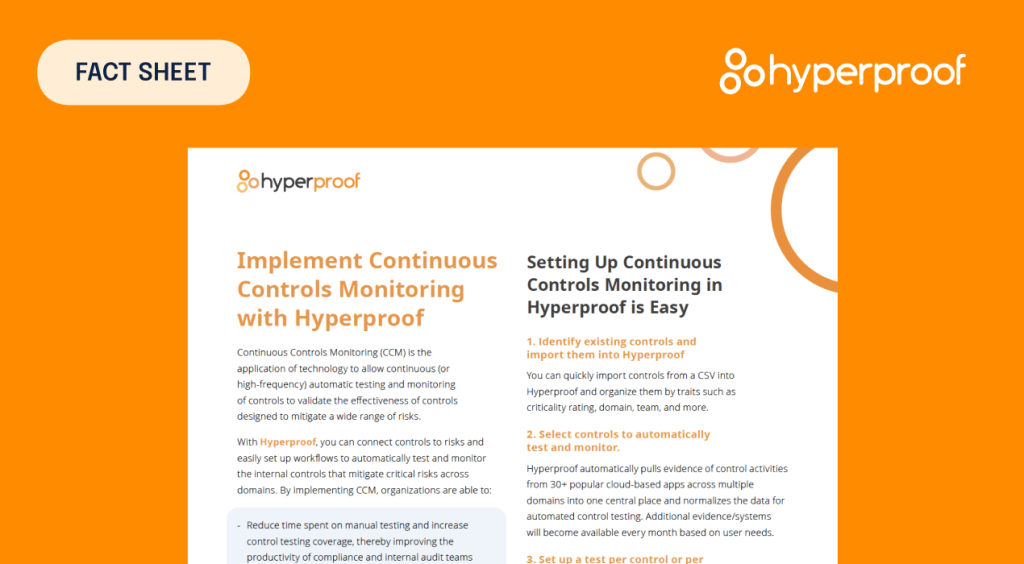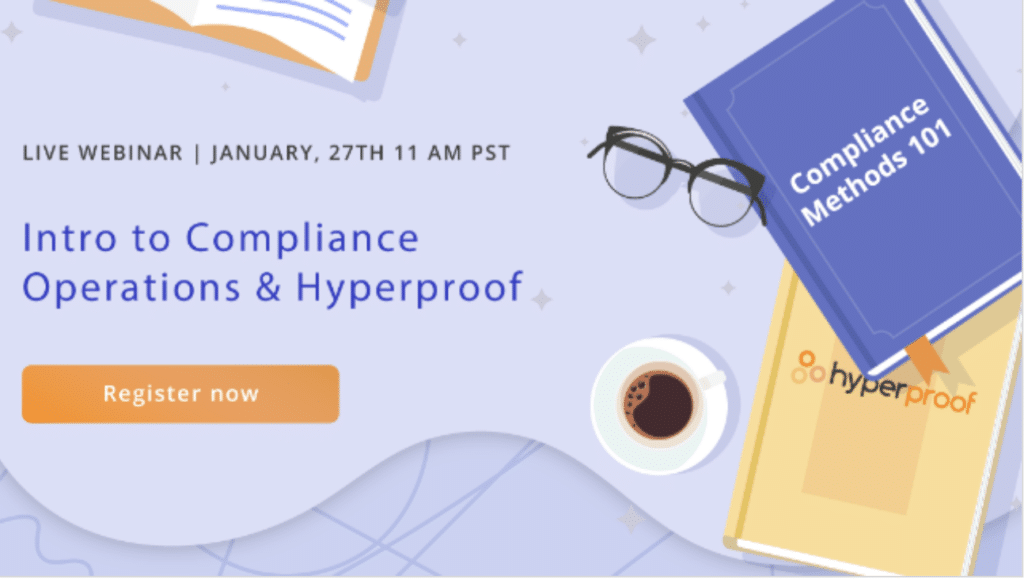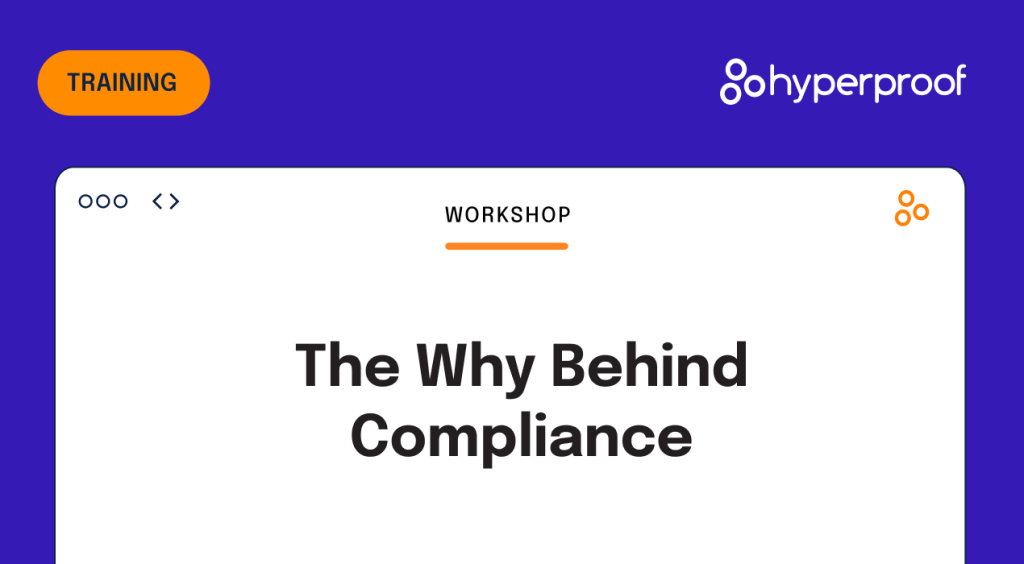Continuous Compliance: What Is It and How to Implement It in Your Organization
Editor’s note: This blog post is an excerpt from our new ebook The Complete Guide to Continuous Compliance.
These days, the cost of compliance and the cost of non-compliance is rising for organizations of all types and sizes. We see an influx of new regulations, and more stringent enforcement actions from regulators. and an uptick in customer-driven audits. So many organizations have been swept into a never-ending cycle of audit-related work.
When organizations must address an increasing number of regulatory requirements and customer audits each year, they need to have a well-defined, measurable, and repeatable approach to managing their compliance efforts. Without a methodology in place, they’re all too likely to suffer from audit fatigue.
Audit fatigue results when a compliance team must work overtime to prepare for every audit, scrambling to remediate issues merely days or hours before an auditor shows up. Audit fatigue occurs when compliance officers struggle to find the evidence they need to present to auditors because documents are poorly labeled and spread across a myriad of systems. Audit fatigue becomes inevitable when operational staff responsible for business processes and
controls must frequently put their core projects on hold to respond to compliance requests and remediate issues.
Fortunately, audit fatigue does not need to become a chronic illness for any organization. When you create and stick to a well-defined, measurable, and repeatable approach to compliance, you can say goodbye to audit fatigue once and for all and achieve a state of continuous compliance.
Many organizations today approach their compliance efforts in an ad hoc, reactive manner. Compliance-related work is done in surges; the workload picks up when an organization must pass an audit or meet a regulatory deadline. Compliance work is put on the back-burner once these events have passed. The cycle starts all over again when the next audit or regulatory requirement rolls around.
Continuous compliance takes the opposite approach; continuous compliance is an ongoing process an organization engages in to proactively manage its risks. It’s about developing a culture and strategy within your organization that continually reviews your compliance position to ensure you are meeting industry and regulatory demands while maintaining secure systems.
Here are some signs that you’re operating in a state of continuous compliance:
- You and your team are fully aware of how your policies, processes, and operations stack up against your relevant standards.
- Your staff knows — and, more importantly, understands — what is expected, how those expectations are addressed day-to-day, and how to measure the effectiveness of those requirements.
- You have streamlined compliance processes. You’ve automated monitoring of controls and the collection of evidence. Compliance staff no longer need to spend countless hours gathering evidence for external audits. Rather than waiting to find out whether you’ve passed an external audit, you know whether control is effective or not in real-time.
When you shift to a mode of continuous compliance, you can expect to spend less time preparing for audits and see more predictable operational costs and lowered security and compliance risks.
Depending on the nature of your business and the types of customers you serve, operating in a mode of continuous compliance can create a competitive advantage for your business. When you demonstrate a commitment to compliance, it sends a positive message to the marketplace that you are a mature and developed company, not a fly-by-night operation. When you have a sterling reputation, customers will be more likely to choose you over the competition, qualified candidates will be more likely to choose to work for you, and investors are more likely to fund your growth.
Getting to a state of continuous compliance requires people, processes, and technology to come together. It involves an organization-wide strategy and focus.
People
1. Tone from the top
To make continuous compliance a reality, there needs to be strong support from the senior leadership team. Upper management has to set the right tone and send the message that the business intends to take compliance seriously. Additionally, leadership must set well-defined business and compliance goals. There should be a clear understanding of how compliance and security goals support key business objectives.
2. Appropriate incentives
The leadership team should calibrate the rewards system to prompt people to make the right choices. When making promotion and compensation decisions, the leadership team must not only look at people’s results but also how they got to their results. Further, leadership must enforce the rules so employees get the message that unethical behavior and compliance lapses will not be tolerated.
3. Dedicated compliance officer
Continuous compliance requires a clear owner. It is important to have a dedicated compliance leader who has the authority and resources they need to get things done.
4. Integration of security and compliance functions
Continuous compliance also requires ongoing collaboration between the compliance team and operations teams like IT and Engineering. After all, operations teams are the ones responsible for implementing IT controls, ensuring adherence to best practice security procedures, monitoring systems, and documenting the controls.
To get operations teams onboard, it is important to communicate how operating from a state of continuous compliance benefits them. When controls are continuously tested and monitored, it reduces the likelihood of operational problems and improves the quality of services IT and engineering delivers. When process owners understand the effectiveness of controls under their purview at all times, it saves them from having to find out about a risk exposure during an audit and having to do unplanned work. It means that they can do a little bit of compliance work on a regular basis and devote the bulk of their time to core projects.
From a practical perspective, the best way to ensure that IT and engineering teams take responsibility for compliance is to work with them to design the controls. This will give IT and engineering teams a sense of ownership over continuous compliance practices. The compliance team should be involved early in the software development cycle so that they can raise security, privacy, or regulatory concerns during the design phase. This is much less disruptive to the business than having compliance raise issues during the review cycle right before the software becomes publicly available.
Want to learn more about what it takes to get your organization into a mode of continuous compliance? Download the full guide here.
See Hyperproof in Action
Related Resources
Ready to see
Hyperproof in action?












